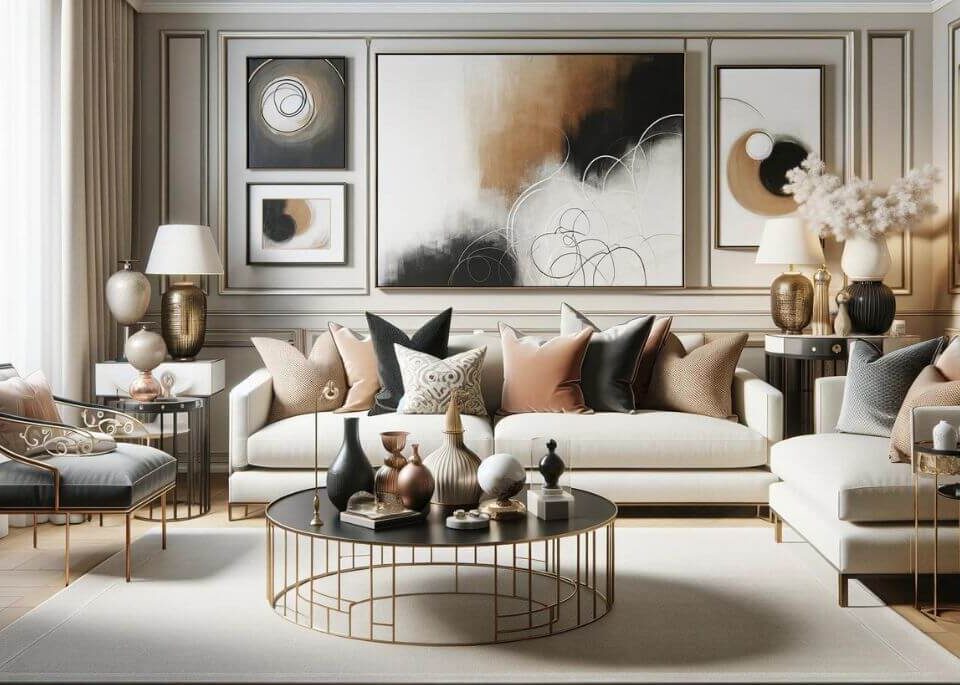
The Influence of Ancient Egyptian Design on Modern Interiors
August 27, 2023
Unveiling the Rich History of Interior Design: From Ancient Times to Modern Influences
September 2, 2023Discovering the Aesthetics of Greek Interior Design
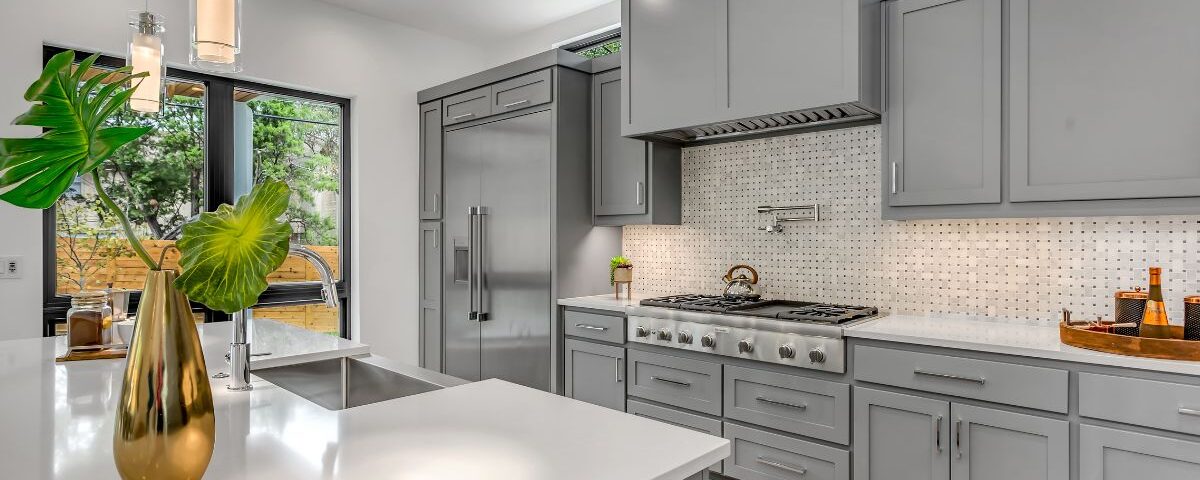
From the magnificent ancient temples to the picturesque island houses, the aesthetics of Greek Interior Design has captivated the world for centuries. This design philosophy, rooted in history and nature, exudes simplicity, elegance, and an undeniable charm. Let’s journey through the classical and modern elements of Greek interior design, and understand its influence on contemporary interiors.
Table of Contents
The Heart of Greek Interior Design
Classical Greek Design
The grandeur of ancient Greek architecture is well-known, characterized by its marble columns, frescoes, and intricate sculptures. However, its interior design is equally significant. Classical Greek Interior Design favored simplicity and functionality, combining minimalistic furniture, natural materials, and a palette inspired by the Aegean landscape.
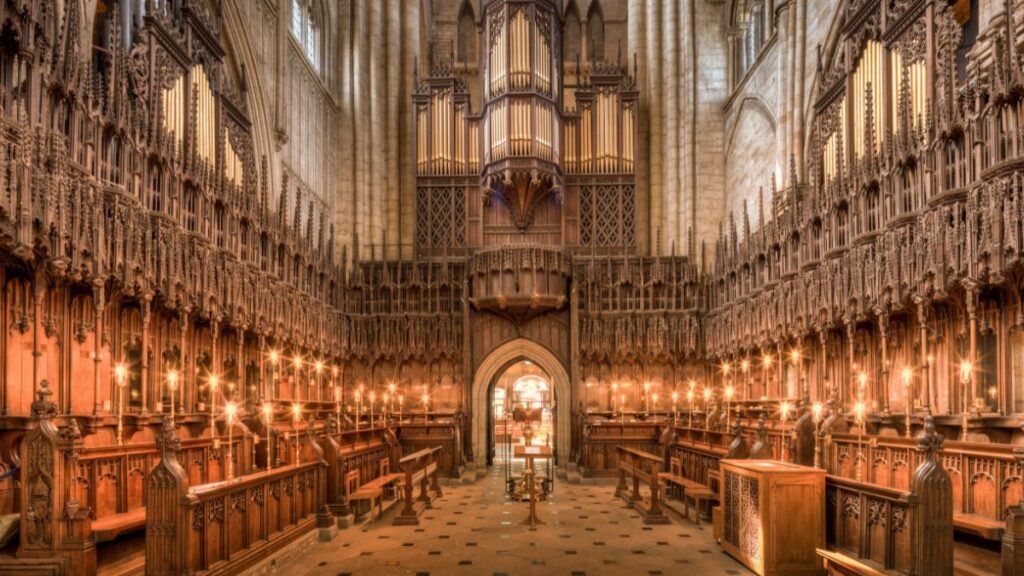
Modern Greek Design
Modern Greek Interior Design is a seamless blend of traditional elements and contemporary sensibilities. It embraces open layouts, plenty of natural light, and a calming color palette, retaining the essence of Greek aesthetics while catering to modern lifestyle needs.
Key Elements of Greek Interior Design
Simplicity
Greek Interior Design is a testament to the maxim “less is more”. Furniture is functional and minimalistic, with simple, clean lines. Clutter is avoided, creating open, breathable spaces.
Natural Light
In Greek design, natural light is a significant component. Homes are designed to invite an abundance of daylight, giving an airy, bright feel to the spaces.
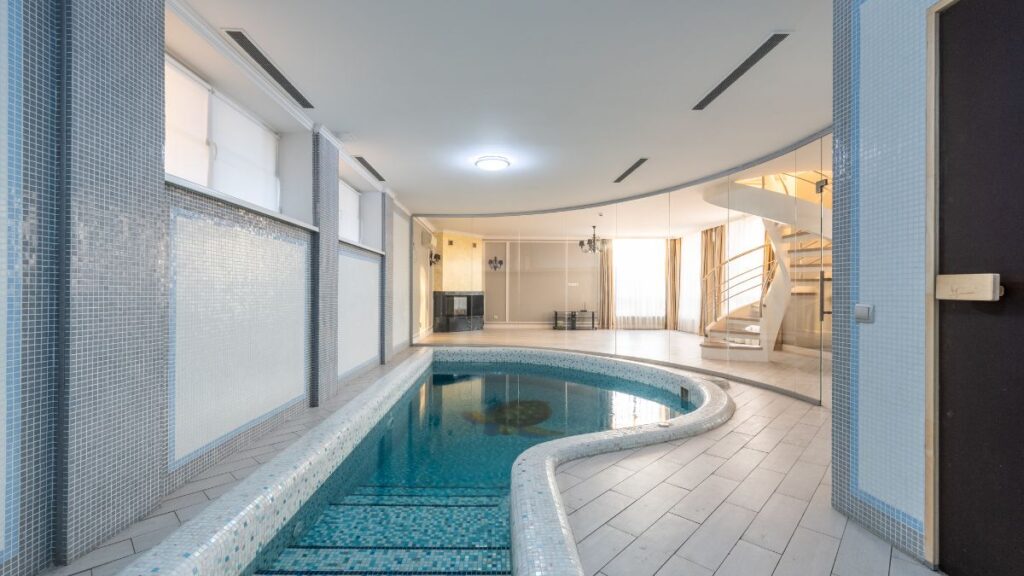
Color Palettes
Greek interiors are typically adorned with colors mirroring their surroundings white representing the buildings, blues symbolizing the ocean, and earthy tones drawn from the landscape.
Natural Materials
The use of natural materials such as stone, wood and cotton is a common practice in Greek Interior Design, connecting the indoors with nature.
Art and Ornamentation
Greek aesthetics reflect a profound love for art. Be it sculptures, pottery or frescoes, artistic expressions are an integral part of Greek interiors.
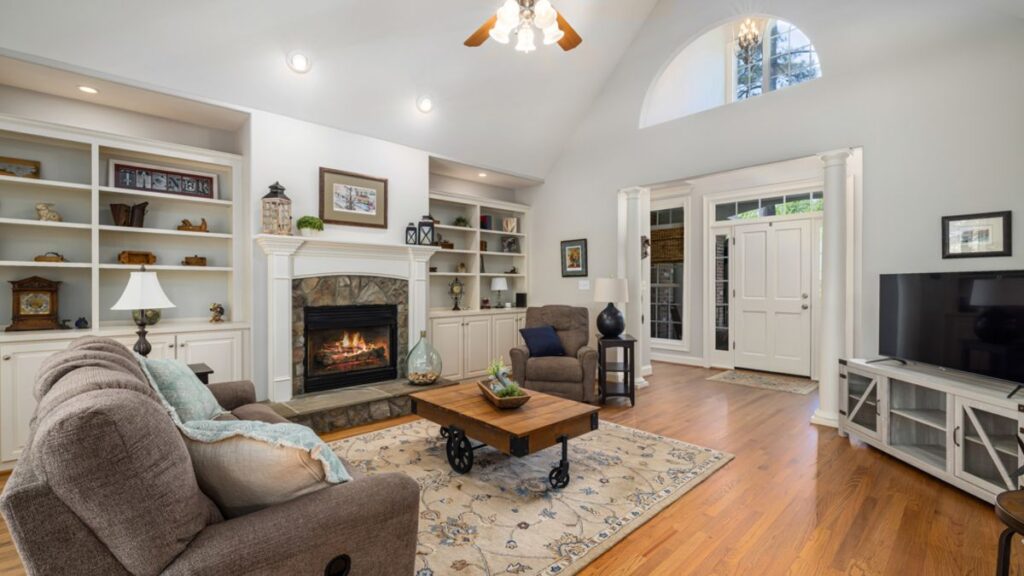
Greek Design in Contemporary Interiors
Contemporary interiors often incorporate Greek design principles. The minimalistic trend in modern design borrows heavily from the simplicity of Greek design. The use of natural materials and colors is another Greek influence seen in contemporary homes.
Case Studies: Modern Interiors Inspired by Greek Design
To better understand the Greek influence on modern design, consider the minimalist designs prevalent in Scandinavian countries, or the beach house interiors of coastal regions like California.
How to Incorporate Greek Interior Design in Your Home
Focusing on Simplicity
Choose simple, functional furniture. Aim for a clutter-free environment that enhances the sense of space.
Emphasizing Natural Light
Ensure your home gets ample natural light. Opt for large windows, glass doors and skylights.
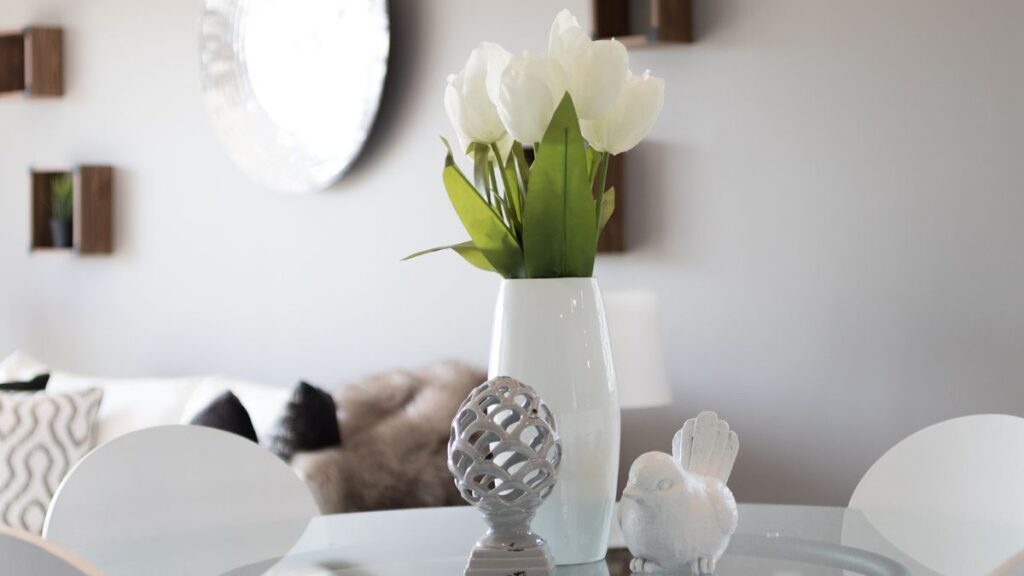
Choosing the Right Colors
Select a color palette that resonates with Greek aesthetics predominantly white, with touches of blue and earthy tones.
Incorporating Natural Materials
Use natural materials like stone for flooring, wood for furniture, and cotton for fabrics. Indoor plants can further strengthen the connection with nature.
Adding Greek Art and Ornamentation
Decorate your home with Greek-inspired art pieces. Fresco reproductions, statues, or pottery can help create an authentic Greek ambiance.
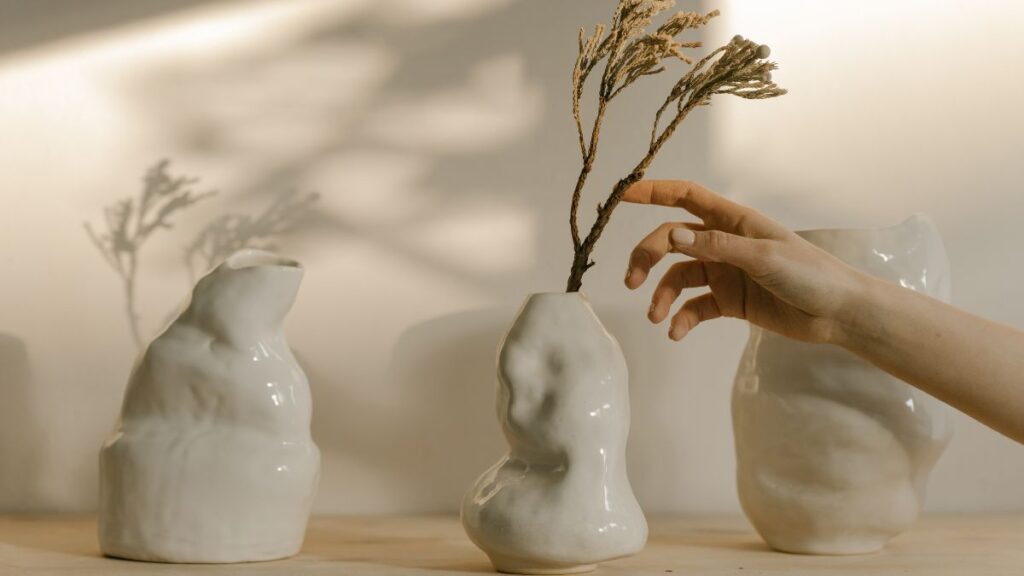
The Relevance of Greek Interior Design Today
Today, Greek Interior Design continues to inspire modern spaces, attesting to its timeless appeal. Its emphasis on natural elements resonates with sustainable design philosophies, making it a preferred choice for eco-conscious homeowners.
Key Takeaways: Embracing the Elegance of Greek Interior Design
Greek interior design embodies simplicity, natural elements, and artistic expression, making it a timeless influence on contemporary interiors. Key elements include a minimalist approach, ample natural light, and a color palette inspired by the Greek landscape. Incorporating these elements into modern homes can create serene and inviting spaces that resonate with sustainable and eco-friendly design philosophies.
Conclusion
Greek Interior Design, with its enchanting blend of simplicity, nature, and art, offers unique design possibilities. Whether you’re a designer seeking inspiration or a homeowner desiring a serene, inviting space, embracing Greek aesthetics can transform your interiors. So, as you embark on your design journey, let the Greek philosophy of harmony guide you to a balanced, beautiful home.
FAQs
1. What are the key elements of Classical Greek Interior Design?
Classical Greek Interior Design is characterized by its simplicity, functionality, natural materials, and a color palette inspired by the Aegean landscape. It also includes artistic expressions such as sculptures, frescoes, and pottery.
2. What is the primary color palette in Greek Interior Design?
The primary color palette in Greek Interior Design is inspired by its natural surroundings. This typically includes a dominant use of white, representing the iconic whitewashed buildings of Greece. It is complemented by shades of blue, reflecting the Aegean Sea and earthy tones drawn from the Greek landscape.
3. How does Greek Interior Design incorporate natural light?
Greek Interior Design incorporates natural light by designing spaces that allow for maximum daylight. This is achieved through large windows, glass doors and often skylights. The emphasis on natural light gives the interiors an airy, spacious and warm ambiance.
4. How can I introduce Greek aesthetics into my modern home?
You can introduce Greek aesthetics into your modern home by incorporating its key elements. These include a simple and functional furniture layout, plenty of natural light, use of natural materials like stone, wood, and cotton, and a color palette inspired by the Greek landscape. Additionally, consider adding Greek art and ornamentation to enhance the authenticity of the design.
5. Why is Greek Interior Design relevant in today’s design landscape?
Greek Interior Design is relevant in today’s design landscape for its emphasis on simplicity, functionality, and nature. Its minimalist approach aligns with the current trend towards decluttered spaces. The focus on natural elements and light resonates with sustainable design philosophies, making Greek design a preferred choice for many modern, eco-conscious homeowners.
6. Can Greek Interior Design be combined with other design styles?
Yes, Greek Interior Design can be combined with other design styles. Its principles of simplicity, natural light, and use of natural materials are universal, and can blend seamlessly with various design styles. For instance, the clean lines and minimalism of Greek design can complement modern or Scandinavian styles, while its use of natural elements can work well with rustic or coastal designs.
7. What is the primary color palette in Greek Interior Design?
The primary color palette in Greek Interior Design is inspired by the natural surroundings of Greece. It predominantly features white, reminiscent of the iconic whitewashed buildings, complemented by shades of blue that reflect the Aegean Sea and earthy tones drawn from the Greek landscape.
8. How does Greek Interior Design incorporate natural light?
Greek Interior Design maximizes natural light through the use of large windows, glass doors, and skylights. This approach ensures that interiors are filled with daylight, creating an airy, spacious, and warm ambiance.
9. How can I introduce Greek aesthetics into my modern home?
To introduce Greek aesthetics into your modern home, focus on simplicity and functionality in furniture layout, ensure ample natural light, use natural materials like stone, wood, and cotton, and adopt a color palette inspired by the Greek landscape. Adding Greek art and ornaments can further enhance the authentic feel.
10. Why is Greek Interior Design relevant in today’s design landscape?
Greek Interior Design remains relevant today due to its emphasis on simplicity, functionality, and natural elements. Its minimalist approach aligns with contemporary trends towards decluttered spaces, and its focus on sustainability resonates with eco-conscious homeowners.
11. Can Greek Interior Design be combined with other design styles?
Yes, Greek Interior Design can be seamlessly combined with other design styles. Its principles of simplicity, natural light, and the use of natural materials make it versatile, complementing styles such as modern, Scandinavian, rustic, and coastal designs.
12. What distinguishes Modern Greek Interior Design from Classical Greek Design?
Modern Greek Interior Design blends traditional elements with contemporary sensibilities. It embraces open layouts, ample natural light, and a calming color palette, retaining the essence of Greek aesthetics while catering to modern lifestyle needs.
13. How does Greek Interior Design reflect the culture and history of Greece?
Greek Interior Design reflects the culture and history of Greece through its use of natural materials, artistic expressions, and a color palette inspired by the Greek landscape. These elements connect interiors with the rich cultural heritage and natural beauty of Greece.
14. What role does art play in Greek Interior Design?
Art plays a significant role in Greek Interior Design, with sculptures, pottery, and frescoes being integral components. These artistic expressions add cultural depth and historical significance to the interiors, enhancing their aesthetic appeal.
15. How can natural materials be used in Greek Interior Design?
Natural materials such as stone, wood, and cotton are commonly used in Greek Interior Design. Stone can be used for flooring, wood for furniture, and cotton for fabrics, all contributing to a natural and harmonious interior environment. Indoor plants can further enhance the connection with nature.
Revisit the opulence and artistry of the Renaissance era with our exploration of The Golden Age of Interior Design: The Renaissance, where we celebrate the revival of classical themes and the birth of new design expressions.

